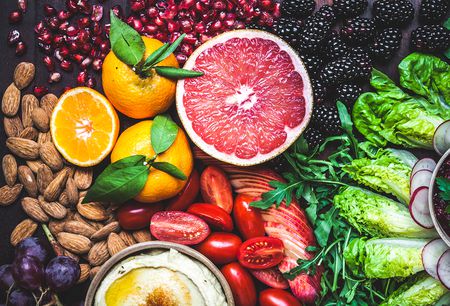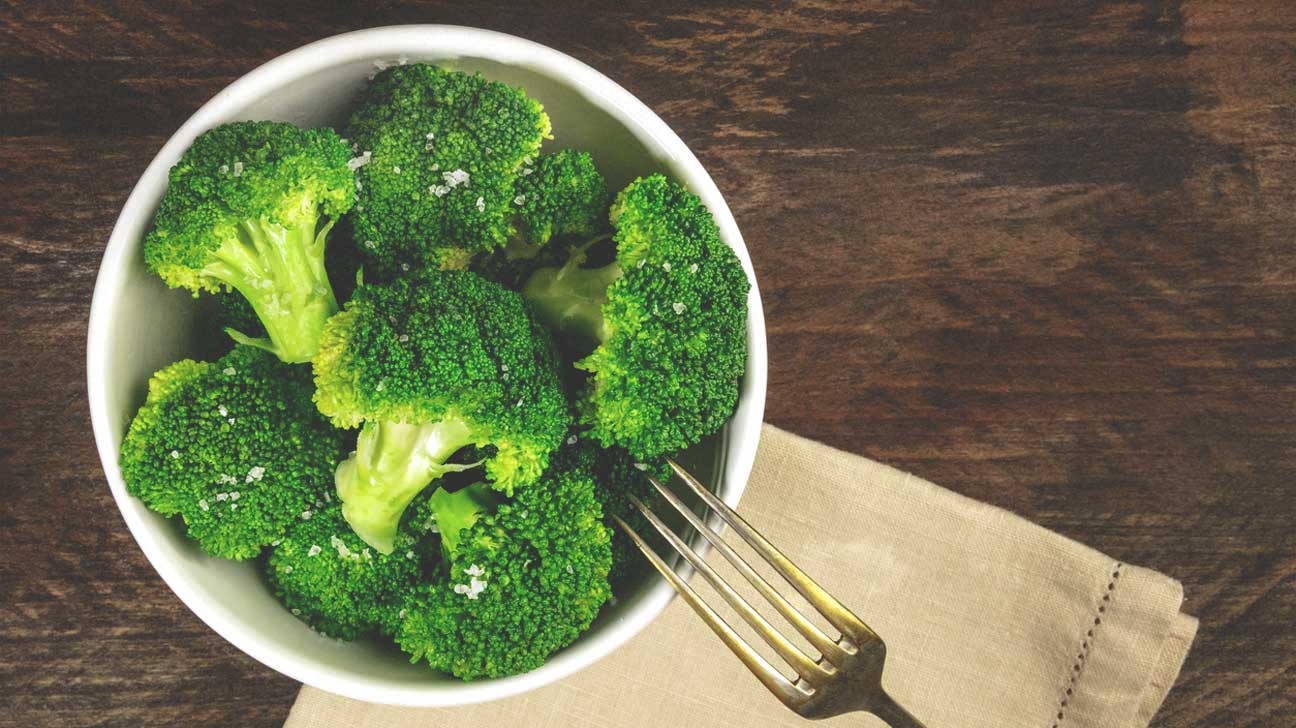
Anyone who follows a vegan diet and does resistance training can gain weight. A plant-based food diet is gaining popularity as it helps reduce health risks like cancer, obesity and heart disease.
A vegan is a diet that does not include any food containing animal products, such as meat, poultry or fish. There are two types of vegan diets: lacto-vegetarian and ovo-vegetarian.
Some people choose vegetarianism to reduce environmental impact. Others do it to avoid cruelty in animal testing, production and consumption. You should include enough proteins in your diet, whether you're a vegan or a vegetarian, to build muscles and maintain a good weight.
If you want to meet your daily protein requirements, then add a whey-protein supplement to your diet. A gram of protein contains three grams of amino acids, which help support healthy metabolism and a lean body.

Vegetables provide a good source of antioxidants and fiber. They also provide a range of vitamins and minerals that are essential for maintaining good health.
It is important to avoid eating too much of the nutrient dense vegetables as their high caloric content can lead to unwanted weight gain. To help you avoid weight gain from consuming too much of these vegetables, it's best to eat plenty of fruits and whole grains instead.
It's smart to add nutrient dense calories to your diet when you are trying to gain some weight. Add some to your favorite dishes for an instant boost in calories.
Nut Butters are another super-calorie dense food you can enjoy as part your vegan diet. Nut butters, which are made from whole nuts, are rich in calories and protein.
These are used to replace peanuts butter in recipes, such as hummus and Baba Ganoush. Or they can be mixed with homemade dressings for drizzling over salads. Tahini can be used to top salads or burgers. It is a great source of iron, calcium, and magnesium.

Carbohydrates provide the body with energy and are therefore a critical component of weight loss programs. As carbohydrates are not dense like fats, it is important to keep track of your intake.
Healthy carbs provide your body a quick fuel source and can help build muscle. Choose simple, unprocessed carbs. They are easy to digest and will provide you with energy.
You can also consider rye, oats or bread. Be mindful of how much of these you consume, as they tend to fill you up more quickly than more nutrient-dense options.
FAQ
Improve immunity with herbs and supplements?
Natural remedies and herbs can be used to increase immune function. Examples include ginger, garlic and oregano, echinacea, vitamin C, ginkgo Biloba, and echinacea.
These herbs should not be considered as a substitute for conventional medical treatment. They could cause side effects like nausea, dizziness or stomach cramps, dizziness as well as allergic reactions.
What are the 7 keys to a healthy, happy life?
-
Make sure you eat right
-
Exercise regularly
-
Sleep well
-
Drink plenty of water.
-
Get enough rest
-
Be happy
-
Smile often
How much should I weight for my height and age? BMI calculator & chart
Use a BMI calculator to determine how much weight is needed to lose. A healthy BMI range is between 18.5 and 24.9. To lose weight, you should aim for a loss of 10 pounds per year. To calculate your BMI, simply enter your height and weight into the BMI calculator.
To see if you're overweight or obese, check out this BMI chart.
How can I get enough vitamins
Your diet can provide most of your daily requirements. Supplements can be helpful if you are lacking in any one vitamin. A multivitamin can contain all the vitamins that you need. You can also buy individual vitamins in your local drugstore.
Talk to your doctor if there are any concerns about getting adequate nutrients. The best sources of vitamins K, E, and C are found in dark green leafy veggies such as spinach and broccoli, kale.
Ask your doctor if you're not sure how many vitamins you should take. Your medical history and your current health status will help you determine the best dosage.
Do I need calories to count?
You might be asking "What is the best diet?" or "is counting calories necessary?" Well, the answer depends on several factors including your current health status, your personal goals, your preferences, and your overall lifestyle.
Which one is right for you?
The best diet for me depends on my current health status, my personal goals, my preferences, and my overall lifestyle. There are many different diets, some good, some not. Some diets work better than others. So what should I do? How do I make the right decision?
These are the questions this article will answer. This article begins with a brief overview of the various types of diets that are available today. The pros and cons of each diet are then discussed. We'll then discuss how to choose which one is best for you.
Let's first take a look at different diets.
Diet Types
There are three types of diets available: ketogenic, high-protein, and low-fat. Let's discuss them briefly below.
Low Fat Diets
A low fat diet reduces the amount of fats you eat. This is done through reducing the intake of saturated fats (butter, cream cheese, etc.) You can replace them with unsaturated oils (olive oil and avocados) For those looking to lose weight quickly, a low fat diet is often recommended. This kind of diet could cause constipation or heartburn and other digestive problems. It can also lead to vitamin deficiencies, if someone doesn't get enough vitamins in their food.
High Protein Diets
High-protein diets limit carbohydrates and favor proteins. These diets are more protein-rich than others. These diets are designed to build muscle mass and help you burn more calories. However, they might not provide enough nutrition for those who need to eat frequently. They can also be very restrictive so they may not be suitable for everyone.
Ketogenic Diets
The ketogenic diet is also known by the keto diet. They are high in fat, moderately high in protein, and low in carbohydrates. They are popularly used by bodybuilders, athletes, and others who want to be able to train harder and more efficiently without becoming tired. You must adhere to all side effects such nausea, headaches, fatigue.
Here are five ways to lead a healthy lifestyle.
How can you live a healthy life?
Healthy living means eating right, exercising regularly and getting enough sleep. It also involves managing stress and having fun. Healthy eating means avoiding sugary and processed foods. Exercise burns calories and strengthens the muscles. Getting enough sleep improves memory and concentration. Management of stress can help reduce anxiety levels and depression. Fun is key to staying young and vibrant.
What can you do if your immune system is weak?
Human bodies are made up of trillions upon trillions of cells. These cells collaborate to form tissues and organs that perform specific functions. When one cell dies, another cell replaces it. Hormones, which are chemical signals that allow cells to communicate with one another, enable them to do so. Hormones regulate all bodily functions from growth and developmental to metabolism and immunity.
Hormones can be described as chemicals produced by glands in the body. They are chemicals that travel through the bloodstream and function as messengers to control how our bodies work. Some hormones can be produced within the body while others can be made outside.
Hormone production begins when a hormone-producing gland releases its contents into the bloodstream. Once released, hormones move through the body until they reach their target organ. Some hormones are only active for a brief time. Other hormones remain active longer and still have an influence on the body's functioning long after they leave bloodstream.
Some hormones may be produced in large numbers. Some hormones can be produced in large amounts.
Certain hormones are only produced at certain times in life. Estrogen, for example, is produced in puberty as well during pregnancy, menopause, old age, and after menopause. Estrogen is important for women to develop breasts and maintain bone density. It also helps prevent osteoporosis. It helps to stimulate hair growth and maintains skin's softness.
Statistics
- nutrients.[17]X Research sourceWhole grains to try include: 100% whole wheat pasta and bread, brown rice, whole grain oats, farro, millet, quinoa, and barley. (wikihow.com)
- WHO recommends consuming less than 5% of total energy intake for additional health benefits. (who.int)
- This article received 11 testimonials and 86% of readers who voted found it helpful, earning it our reader-approved status. (wikihow.com)
- According to the Physical Activity Guidelines for Americans, we should strive for at least 150 minutes of moderate intensity activity each week (54Trusted Source Smoking, harmful use of drugs, and alcohol abuse can all seriously negatively affect your health. (healthline.com)
External Links
How To
How to Live A Healthy Lifestyle
A healthy lifestyle is one that allows you to maintain your weight, your health, and your fitness. It's a way of living that includes eating well, exercising regularly, getting enough sleep and avoiding harmful substances such as alcohol, caffeine, tobacco, drugs, and so on. A healthy lifestyle can help you stay fit and feel great. In addition, a healthy lifestyle reduces your risk of chronic diseases like heart disease, stroke, diabetes, cancer, osteoporosis, arthritis and many others.
This project had the main objective of providing a step-by–step guide to living a healthier lifestyle. The introduction of the project was the first. This describes what a healthy lifestyle looks like, why it is important, and who we are. The body paragraphs are a collection of tips on how to live a healthy life. I then wrote the conclusion. This summarizes the whole article, and provides additional resources, if necessary.
This assignment taught me how I can write concise, clear paragraphs. I learned how topic sentences and supporting details were organized. Because I had to locate specific sources and properly cite them, my research skills improved. Lastly, I gained knowledge on how to use proper grammar when writing.